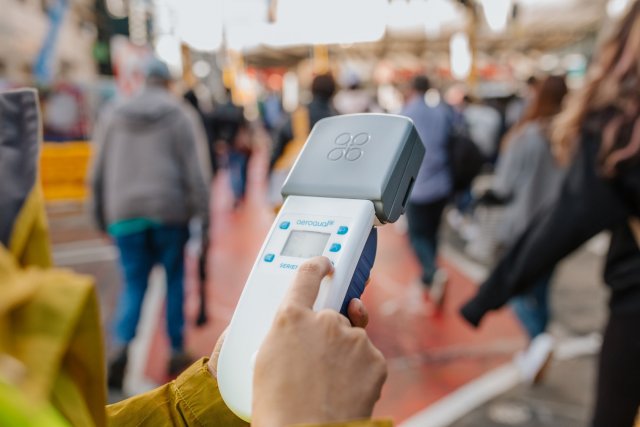EPA Combines Expertise with New Zealand Company to Advance Air Sensor Technologies
Published March 26, 2018
Next Generation Air Monitoring Tools are new technological advances that are increasingly being used by researchers and citizen scientists alike to monitor and measure air quality. Unlike large, stationary federal reference monitors, which allow only a limited group of specialists to use, Next Generation Air Monitoring tools are small, low-cost and portable, engaging a variety of groups to measure pollutants to understand air quality.

In November 2017, EPA signed a Cooperative Research and Development Agreement (CRADA) with Aeroqual, a New Zealand-based company specializing in the development of air quality monitoring equipment, with the goal of investigating new applications, methodologies and technologies for the low-cost measurement of outside air pollutants.
Rachelle Duvall and Russell Long are EPA’s co-investigators, working alongside Geoff Henshaw and Kyle Alberti, Aeroqual’s project leads. Duvall says “EPA will benefit from this collaboration as we will combine our expertise in air measurements with Aeroqual’s expertise in sensor development to advance air quality characterization using Next Generation Air Monitoring tools.” Duvall adds “because these tools are so much more accessible compared to traditional air monitoring equipment, and are being used by not only the scientific community but also the general public, it is important for all users to have confidence in the data they are collecting."
Current low-cost air sensors measure common air pollutants, like ozone (O3), nitrogen dioxide (NO2), sulfur dioxide (SO2), particulate matter (PM) and many others that are regulated under the Clean Air Act. There is also great interest in measuring other compounds including air toxics such as volatile organic compounds (VOCs) which cause adverse health effects.
As part of the CRADA, EPA and Aeroqual researchers are focusing on four areas to support the advancement of air sensor technologies:
- Sensor performance: air sensors must obtain accurate and reliable air quality measurements. Scientists aim to understand long-term performance and stability of sensors, cross interferences with other pollutants, impacts from temperature and humidity, and performance in areas with poor air quality.
- Sensor calibration: calibration provides a way to ensure that air sensors continuously provide precise measurements over time.
- Expanding and enhancing measurement capabilities: while most of the commercially available sensors target common air pollutants like O3, NO2, PM, and others, scientists are interested in the ability to measure additional air pollutants such as volatile organic compounds and other air toxics.
- Sensor applications: investigating different ways to use and apply air sensor technologies is vital to exploring how sensor designs can be optimized to improve measurements and increase usability.
Over the next four years, EPA scientists will evaluate data collected from low-cost sensors placed at EPA’s Ambient Monitoring Innovative Research Station (AIRS) in Research Triangle Park, North Carolina and as part of a number of EPA field studies. At the same time, the instruments design will also be evaluated. Aeroqual will provide various air sensor technologies so that both EPA and Aeroqual can review project results and places for improvement. The team will summarize their results and prepare findings to share in print and digital form.
As a result of the CRADA, Duvall hopes the two organizations will improve some of the many challenges that low-cost, portable air sensors bring. For one, ensuring accurate and reliable performance over time. She says, “this work is important because we are looking for lower cost options to accurately monitor air quality in the future and this CRADA can help achieve our goals.
